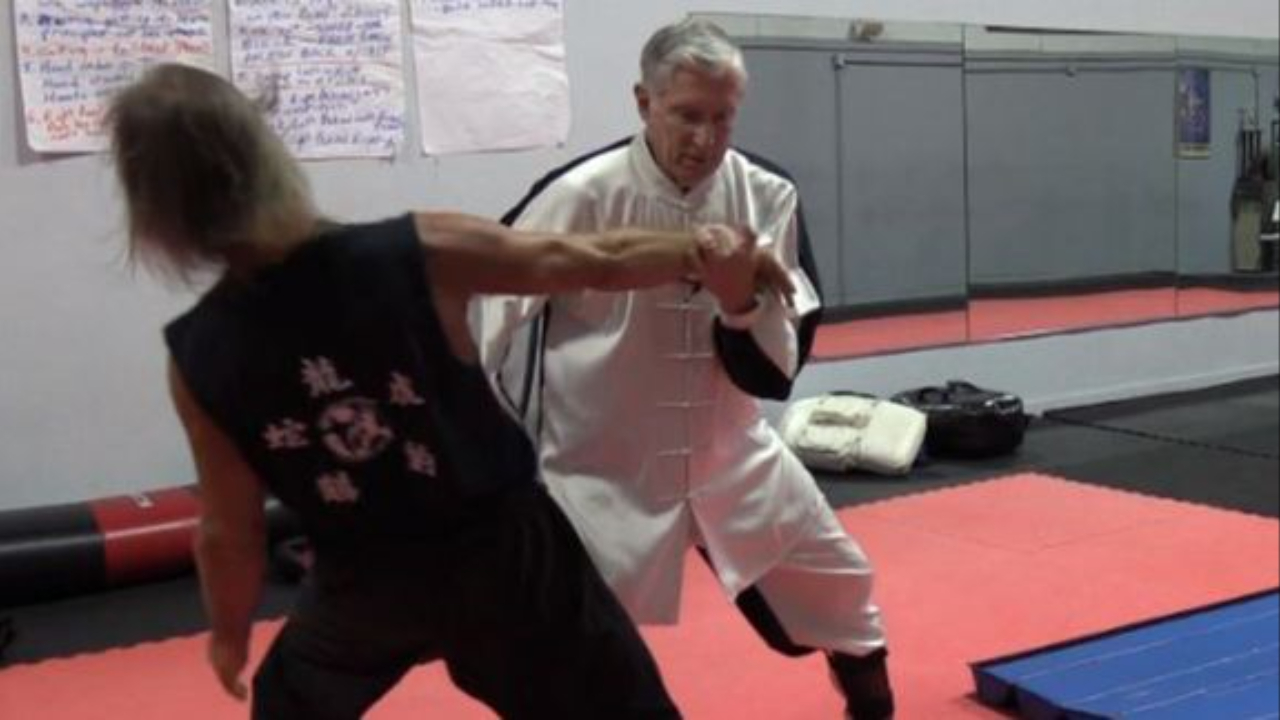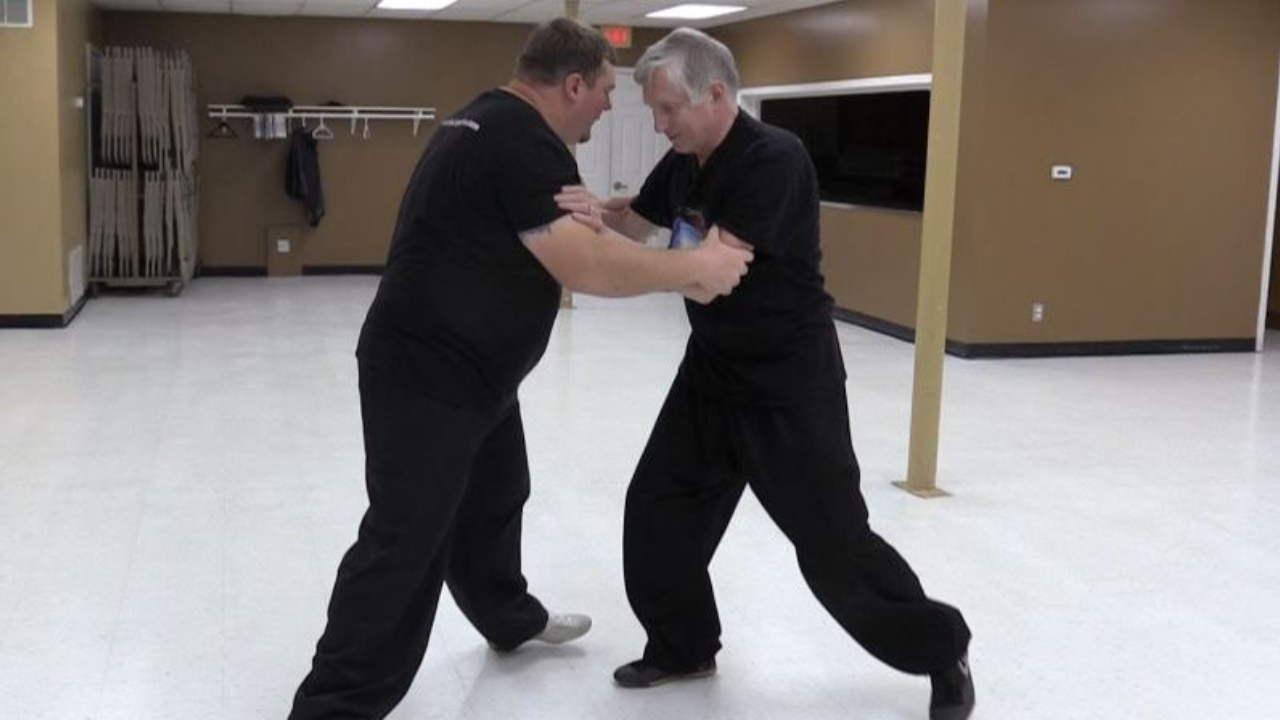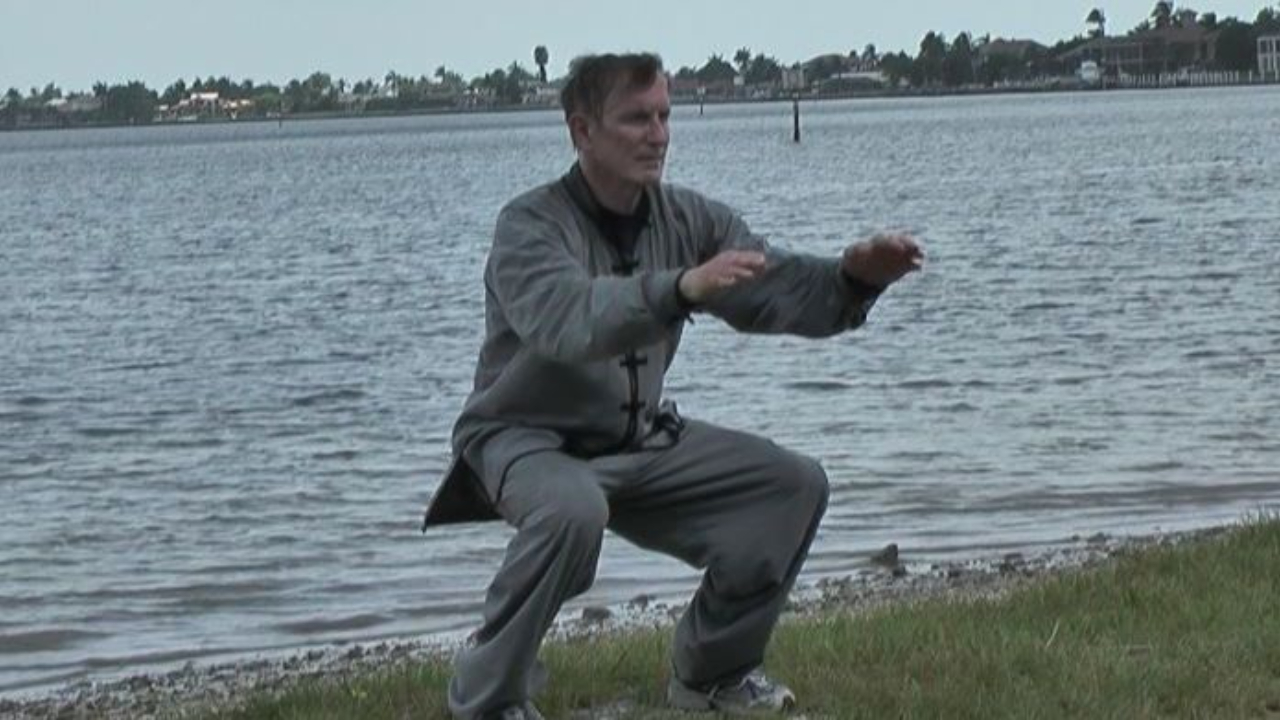Video Highlights of New Kindle Ebook - Bagua Self-Defense

Here is a short video with highlights of some of the self-defense techniques in my new ebook - Baguazhang Self-Defense: Fighting Applications of the Cheng Style Eight Main Palms Form.
The ebook has 380 photos and descriptions of 150 self-defense applications from this one Bagua form. Each application is discussed and shown with an emphasis on internal body mechanics. The ebook costs only $6.99 and is available on Amazon's Kindle Store. Many nations have their own Amazon stores (if you are outside the US, check Amazon in your country). Here is the link to the ebook on Amazon's store in the United States.
The video was done for still photo purposes, to illustrate how each movement in the form is used for self-defense.
Tai Chi's Single Whip - Silk-Reeling and Connected Internal Strength

Single Whip is a common movement in all styles of Tai Chi (Taijiquan) and, like all Taiji movements, it depends on some key internal body mechanics that give you relaxed strength. The body mechanics include:
-- Establishing and maintaining the ground path through all movement, including stepping.
-- Establishing and maintaining peng jin, an expansive force that is a physical skill (not mystical).
-- Whole-body movement -- when one part moves, all parts move, and they are connected through the body from the ground.
-- Silk-Reeling energy -- not actual "energy," but a spiraling movement that is another physical skill.
-- Dan T'ien rotation that is the center of all movement.
-- Opening and closing the kua.
There are many other skills and principles, but if you don't have these basic concepts, you aren't going to get very far in Taiji.
I'll show you a self-defense technique that you can practice with a partner using the opening part of the Single Whip movement, when you spiral ...
Two Bagua Moves to Escape an Arm Lock - Baguazhang Self Defense

Baguazhang is an internal martial art that relies on circular movement, turning, spiraling, and relaxed power similar to Taijiquan.
Many types of arm locks are used in martial arts. One of the locks that we use is sometimes called "Pat the Bull." Your opponent has you in the lock and has grabbed your shoulder to make it more firm.
In the Cheng style Baguazhang form "Eight Main Palms," two movements in the section called Grinding Palm are very useful for escaping this arm lock. The movements are called "Green Dragon Swings Its Tail" and "White Snake Twists Its Body." In the form, these movements follow each other.
Photo 6-9 shows the start of "Green Dragon Swings Its Tail." You continue to turn, stepping your right foot around into a pidgeon-toe stance, and spiral the arm upward. You continue to spin for the movement called "White Snake Turns Its Body."
When you finish, you are standing upright again.
Someone who applies force to you is often thinking in one direction. An opp...
How to Develop Weak Tai Chi

I read a blog post this week by a well-intentioned (I assume) person who teaches Tai Chi and calls it the "art of gentle movement," a description that misses the essence of Tai Chi. Let's forget for a moment that Tai Chi fighters were often hired to guard caravans and train the men in villages to fight. Let's just forget that.
The author of this article says that by doing Tai Chi, you can feel the universe flowing through you and you can achieve enlightenment.
Here is an excerpt from this article that was titled "Entering the Quantum Era of the New Energy":
"Tai Chi Chuan finds it place back amongst the most powerful ways to become a condensed person that has clarity of mind, health of body and emotional countenance. It is said that the real meaning of the martial art is the cradle of enlightenment, that it is about self-discovery through a state of being that allows the universe to flow through the empty space between the particles and that this state brings a higher consciousness ...
Dropping Power - Generating Power Over a Short Distance

Have you ever heard of the "Teacher Test" in Taiji? When you meet a Taiji instructor, ask if they can do the Teacher Test.
Most often, they will stare at you with a blank expression, but if they actually know what you are asking, and demonstrate the Teacher Test, you have found a good teacher and you should sign up for instruction.
The Teacher Test was demonstrated to me by my first Chen Taiji instructor, Jim Criscimagna, the day I met him in early 1998. I had been in martial arts for 25 years at that point, and I had read about the Teacher Test in an online forum but had never seen it. When I asked Jim about it, he asked me to stand next to him and put my hand on his shoulder.
"Now, without cocking your arm and shoulder -- without using local arm and shoulder muscle -- and without changing your stance -- knock me off balance," he said.
I was paralyzed...
Connecting with Your Opponent's Center in Tai Chi

When you and a partner are doing push hands, or if you find yourself in a situation that calls for self-defense, one of your primary goals is to "remain centered."
Remaining centered requires you to maintain your mental balance and physical balance. If you lose your balance -- mentally or physically -- you are vulnerable. The same is true for your opponent.
This means that one of your goals when facing an opponent is to find his center, connect with it and control it.
On my website there are videos related to this topic. You can meld with your opponent's center as it is turning, helping it continue in the direction it is traveling. That's my favorite way to control an opponent's center, but there is another way.
When you practice push hands with a partner, you try to remain sensitive, and you do not want to give him an opening. You hide your internal strength from him. You are relaxed but aware, connected through the body, but you are flexible, moving, and able to respond and ...
The Value of Silk-Reeling Exercises in the Practice of Internal Arts

Last night, my practice consisted of a few Silk-Reeling exercises. I selected four or five that I don't practice as often as I should (including shoulder reeling, ankle and leg reeling and a couple more) and I worked them over and over, trying to feel the connection from the ground through the body. Relax, sink, feel it from the ground, spiraling through, connected and strong.
If you get one Silk-Reeling exercise right, you are doing good Taiji, and good Bagua. The exercises I do were made popular by Chen Xiaowang during the past 20 years or so. The exercises are among the first lessons that my students practice, laying the foundation for all of the body mechanics
that are crucial for the internal arts -- Taiji, Bagua, and Xingyi.
Silk-Reeling "Energy" is not really a real type of "energy" in our body. The word "Energy" is often misinterpreted when translated from kung-fu texts. It should be thought of as a "method," a way of moving the body as you deal with an opponent's forc...
A Lesson in Kung-Fu Etiquette for the Straight Sword (Jian)

Some people think it's useless to train in martial arts weapons such as the straight sword because we no longer have swordfights on the street.
I believe training with weapons is important to train body mechanics, coordination, and the ability to transmit internal power through the weapon. The same techniques that make a straight sword useful can also be used if you are attacked and can pick up a stick.
And, of course, weapons are cool, and isn't that one of the reasons we began studying in the first place? One of the coolest parts of Enter the Dragon was when Bruce Lee whipped out different weapons. His nunchaku action was a crowd favorite. I saw that movie in 1973 and spent a lot of time practicing nunchaku moves.
I still train weapons including the single and double sticks, staff, straight sword, broadsword, spear, and elk horn knives.
The straight sword, known in Chinese arts as the "Jian," is considered the "master's" weapon because of the skill it requires. In traditional A...
Qigong - Chi Kung - and the Eight Pieces of Brocade

It’s impossible to trace the origin of many chi kung exercises. The Chinese people have a military history that dates back thousands of years, and the value of exercise and stretching were probably recognized very early as being beneficial for the success of battlefield troops.
The images above – and below – were found in the tomb of King Ma, who lived before Christ, died in 103 BC and was buried with many documents, including military training manuals. The documents were discovered when his tomb was found in 1973. Some of the images are very similar to chi kung exercises, including movements from the Eight Pieces of Brocade.
I first learned the Brocade exercises as chi kung, but the more I practiced, the more I came to believe that these were also used as stretching and leg conditioning exercises for Chinese soldiers. It is possible that the chi kung interpretation was added many centuries later.
The Eight Pieces of Brocade is not a mystical or magical routine. Practicing the...
Cheng Man Ching - the Birth and Marketing of Tai Chi in the U.S.

Cheng Man Ching was one of the first notable people to bring Tai Chi to America. He was born in 1902, studied some Tai Chi before meeting and becoming a student of Yang Chengfu, historically known as the most famous early teacher of Yang Tai Chi. Cheng studied with Yang Chengfu for six years.
By 1946, Cheng Man Ching had developed his own short version (37 movements) of Yang Chengfu's long Tai Chi form. He performs it in the video below.
He moved to New York City in 1964, no doubt causing quite a stir since Tai Chi was mysterious at the time. In 1967, he teamed with Robert W. Smith and T.T. Liang to write a book about Tai Chi. He died in 1975, but by that time, as Tai Chi teachers are bound to do, he became a legend.
I am grateful that he was a pioneer who helped to bring the internal arts to America. When I watch video of him performing, or one of his more famous students, William C.C. Chen, I am always disapp...
